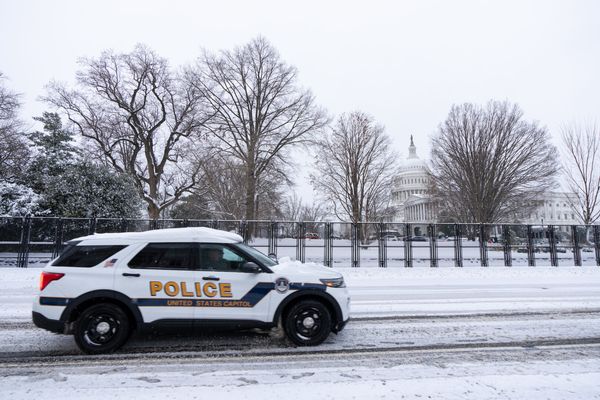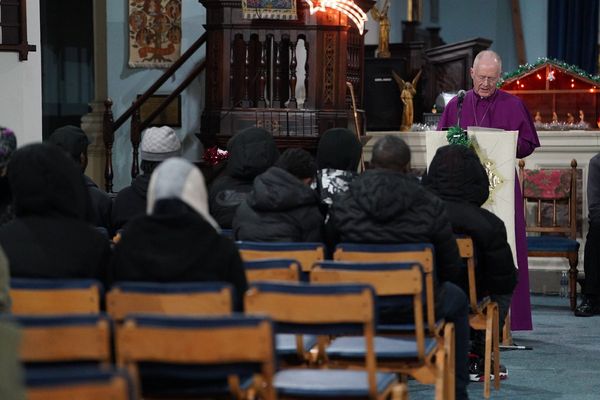
In a country where a majority of people support legal abortion, American voters have chosen for president a man who bragged about his role in appointing the Supreme Court justices who overturned Roe v Wade, ending the federal constitutional right to an abortion. CNN’s national exit poll found 28% of people who believe abortion should be legal voted for Donald Trump.
So what happened on voting day? And what happens next?
The abortion ballots
Voters in 10 states cast ballots on abortion measures and the majority voted in favour of expanding abortion rights in the US election, more than two years since Roe fell. A ballot measure is a question that appears on a statewide or local ballot on election day for voters of that jurisdiction to decide. The measures were campaigned for by various reproductive rights groups, and their lawyers, in an attempt to claw back the healthcare lost under the abortion bans enacted post-Dobbs.
Six states expanded abortion protections, and in two states, South Dakota and Nebraska, the population voted against expanding abortion rights — in Nebraska, an anti-abortion initiative prevailed against a competing abortion rights one. A bid to restore protections for the procedure also failed in Florida, where last year a woman was forced to carry an unviable foetus to term and watch her baby die in front of her. But it is hard to see Florida’s result as a population voting no for abortion rights — despite the misleading headlines. The majority (57.1%) of voters in Florida actually supported the amendment, but the state needed a 60% supermajority to pass, the highest threshold in the country.
Even in deep-red Missouri, where Republicans tried everything to keep abortion off the ballot, voters approved a ballot measure enshrining abortion rights in the state’s constitution, effectively reversing the state’s near-total abortion ban. This was momentous — after Roe fell, Missouri was the first state to ban abortion, even in cases of rape, with only an exception for medical emergencies.
So not everyone who voted for abortion voted for Harris?
Maryland, Colorado and New York all voted for Harris, but still abortion proved more popular in each state than the presidential candidate (at last count: in Maryland, 74.1% voted for abortion rights while 60.2% voted for Harris; in Colorado, 61.4%/54.4%; in New York, 61.8%/55.8%).
In Montana, Trump proved only slightly more popular than abortion rights (57.3% voted for abortion rights in the constitution and 58.9% voted for Trump).
It would be foolish to speculate on the motivations of people who delivered a split ballot — a vote to protect abortion rights and a vote to support Trump, who has a weak record on reproductive healthcare — but it isn’t entirely surprising. Most Americans don’t support a federal abortion ban (including most Republicans) and polling last month showed there’d been an increase in Republicans planning to vote for abortion rights.
Perhaps state-sanctioned bodily control seems out of step with voters who believe in limited government. Or perhaps even if you’re anti-abortion, the past few years have proven that limiting one form of reproductive healthcare impacts all forms of reproductive healthcare, worsening an already appalling national maternal mortality rate and driving OBGYNS out of abortion deserts. Not to mention the rise in infant deaths as patients are forced to carry foetuses with lethal congenital anomalies to term.
Can Trump be trusted on this?
In short — no. Trump might have publicly softened his anti-abortion stance throughout the election campaign, saying he would veto a national abortion ban as president, but he is incredibly inconsistent on this issue. Republicans and the anti-abortion lobby will be pushing for a ban even as people in many states continue to fight to win back the basic rights they had before the fall of Roe.
As Jessica Valenti has written: “Conservatives’ plan for a Trump presidency is centred around massive attacks on abortion, birth control, and women’s rights more broadly, and the people he would empower are the most radical players in the game.”
You also don’t need a national ban to limit abortion federally — there are many ways his executive branch could further limit already fragile reproductive rights. As the legal architect behind a law that effectively banned abortion in Texas told The New York Times in February: “We don’t need a federal abortion ban when we have Comstock on the books.”
The nineteenth-century Comstock Act could be used to override state protections by making it illegal for patients to receive abortion medication, used in more than half of abortions in the US, and for doctors to receive the medical equipment they need. There is a consistent legal effort to restrict mifepristone (the first drug taken in a medical abortion) with three Republican attorneys filing a new lawsuit against the Food and Drug Administration in October.
Trump could impact reproductive rights through the judiciary just like last time when he appointed Matthew Kacsmaryk, one of the most anti-abortion judges in the country.
Then there’s Project 2025: a set of conservative policy proposals for a future Republican administration drafted by The Heritage Foundation, a think tank “that has shaped the personnel and policies of Republican administrations since the Reagan presidency”. Trump distanced himself from the plan, which promises to curtail abortion access, but his own policies mirror many of the plan’s main proposals, and its top directors worked in his administration. In 2018 the organisation boasted Trump’s administration had “embraced nearly two-thirds of the policy recommendations” in another of its documents.
This doesn’t even get to the global implications for sexual and reproductive rights. If Trump adopts policies set out in Project 2025, the Global Gag Rule, which he proudly implemented last time he was in office (Biden rescinded it), it would apply to all “foreign assistance”. MSI Reproductive Choices analysis shows there are 690 million women of reproductive age living in countries that receive billions of dollars in USAID funding. One in three women of reproductive age could have their reproductive health and rights impacted by the reenactment of this rule under a Trump administration.
What comes next?
There weren’t ballots in all states, including in those where women are dying. There was no ballot in Georgia where ProPublica has linked two deaths to the state’s abortion ban. There was no ballot in Texas where two women reportedly died after they faced delays in getting miscarriage care. There was no ballot in Oklahoma where a woman with a life-threatening pregnancy was told to keep bleeding out in the parking lot until she was “crashing”, or in Alabama where a woman with the same condition was denied care. Abortion is now restricted in about half of US states with devastating and documented impacts.
After casting his vote in Florida, Trump snapped at a reporter when he was asked about Florida’s suffocating abortion ban, telling the journalist he “should just stop talking about that”.
Millions of Americans voted in favour of abortion rights at this election and it is unlikely they’ll let him stop talking about an issue that impacts an enormous swath of the population.







